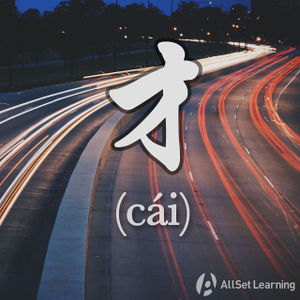Difference between revisions of "Expressing "only after" with "cai""
| Line 3: | Line 3: | ||
These patterns using 才 are loosely related, and revolve around a meaning of "only when," "only after," "only then," or "not until." They suggest a condition without stating the condition as explicitly as in the pattern 只有……才……. | These patterns using 才 are loosely related, and revolve around a meaning of "only when," "only after," "only then," or "not until." They suggest a condition without stating the condition as explicitly as in the pattern 只有……才……. | ||
| − | == | + | == 才 as "Only When" or "Only After" == |
=== Structure=== | === Structure=== | ||
| Line 16: | Line 16: | ||
| + | == 才 as "Not Until" == | ||
| + | |||
| + | This use of 才 is quite similar to the 才 used to express lateness. The two sort of blend together. | ||
| + | |||
| + | === Structure=== | ||
| + | |||
| + | ⋯⋯,才⋯⋯ | ||
| + | |||
| + | <div class="jiegou"> | ||
| + | ⋯⋯ ,才 ⋯⋯ | ||
| + | </div> | ||
| + | |||
| + | === Examples === | ||
== Sources and further reading == | == Sources and further reading == | ||
Revision as of 07:29, 14 November 2019
-
Level
-
Similar to
-
Used for
-
Keywords
These patterns using 才 are loosely related, and revolve around a meaning of "only when," "only after," "only then," or "not until." They suggest a condition without stating the condition as explicitly as in the pattern 只有……才…….
Contents
才 as "Only When" or "Only After"
Structure
⋯⋯,才⋯⋯
⋯⋯ ,才 ⋯⋯
Examples
才 as "Not Until"
This use of 才 is quite similar to the 才 used to express lateness. The two sort of blend together.
Structure
⋯⋯,才⋯⋯
⋯⋯ ,才 ⋯⋯
Examples
Sources and further reading
Books
- Modern Mandarin Chinese Grammar: A Practical Guide (pp. 95, 263, 266) Anything Goes (无所不谈) →buy



